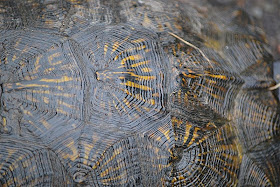They thoughtfully and wisely chose a gift that would be useful and much appreciated by us. They chose to give us a squirrel proof bird feeder! But their anxious concern was, Will it really work so the squirrels cannot get into the bird food?
YES IT WORKS AND I HAVE THE PROOF IN PICTURES TAKEN TODAY!!!!
What a wonderful gift this is.
THANK YOU, THANK YOU SO MUCH, RIEL, SHANE, ELI and TESS!!! WE LOVE OUR NEW SQUIRREL PROOF BIRD FEEDER.
In the first picture you can see a Gray Squirrel on the roof of the bird feeder.
The second picture above shows the squirrel looking in checking to see if there is food in the feeder and yes, there is, It will be able see lots of sunflower seeds inside! At the bottom of the bird feeder you can see an opening; that is where the birds feed from. Also notice there are two red bars at the bottom of the feeder. If any weight is put on the bottom bars then the feeder will close as the opening will be covered by a red covering. Watch what happened next!!!!!
The squirrel has its paw on the bottom bar and that caused the cover to come down over the opening and has closed the feeder!
The covering stays in place as long as the squirrel's paw rests on the bottom bar!

No matter how it squirms around or what position it takes, as long as its paw is holding the bar down it cannot reach the food!!!
The Squirrel finally gives up and jumps down from the bird feeder!
As the squirrel removes its paw the feeder opening is uncovered again, and the bird feeder is available for the birds to feed there again. What a great gift family!!! It works! We love it, but I don't think the squirrel does!
















































